#Japan Tourism
Explore tagged Tumblr posts
Text

Shikoku has become a laid-back Pokémon paradise!
Congratulations to Quagsire for becoming the new ambassador to Kochi Prefecture!
#quagsire#slowpoke#pokemon#pokemon fanart#pokemon drawing#pokemon art#pkmn#pkmnart#pkmn art#pkmn fanart#pokemon blog#japan travel#japan tourism#shikoku#kochi prefecture#kagawa prefecture#enyoalkis art
32 notes
·
View notes
Text
Tips para viajar por Japón (por primera vez)
¡Hola, soy Caty Natasha!
En este post les compartiré los tips que me ayudaron a hacer de mi viaje a Japón lo más disfrutable posible y también BBB (bueno, bonito y barato) sin tener que sacrificar mucho.
Les seré honesta, sí fue un viaje TIPO mochilazo, pero no del todo, porque mi amiga Olga y yo íbamos mentalizadas de que compraríamos y gastaríamos en lo que consideráramos una inversión jaja.
Los temas a tratar serán:
Visas, pasaportes y vuelos
Comunicación
Idioma
Cultura
Transporte
Comidas
Alojamiento
Experiencias
Dinero y presupuesto
Maleta
La compañía
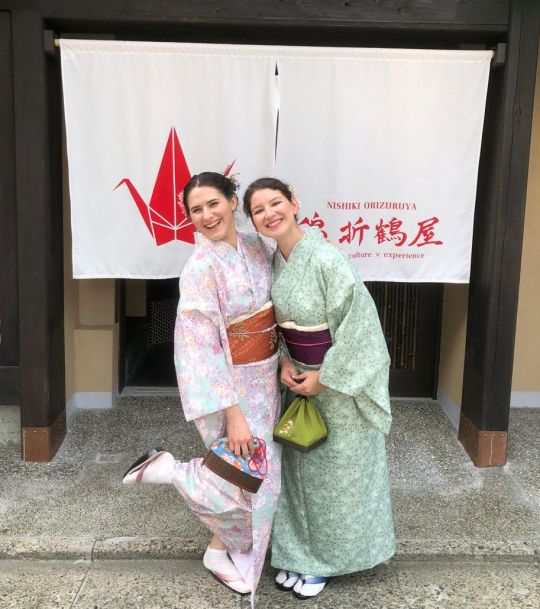
Vestidas en kimono afuera de la ceremonia del té a la que asistimos, más adelante les platicaré de esto en "Experiencias".
VISAS, PASAPORTES Y VUELOS
Antes de realizar cualquier compra de avión POR FAVOR revisa que tus papales estén en orden. Para ingresar a Japón puedes entrar con tu pasaporte mexicano sin problema y tener permiso de quedarte hasta 3 meses.
Peroooooo, repito, antes de realizar cualquier compra revisa tus papeles. Si tu vuelo tiene conexión por Estados Unidos o Canadá NECESITAS una visa para entrar a estos países. No porque tu destino final sea Japón y solo estés cruzando por estos países norteamericanos creas que te dejarán pasar, no chavo, así no jalan las cosas.
Segundo, caza vuelos. Yo amo cazar vuelos, algo emocionante tiene el encontrar mega promos de vuelos que aún no tomaré jaja. La página web que yo uso es Google Flights, ahí es donde yo puedo comparar precios con diversas aerolíneas, los tiempos de vuelo, traslado, las fechas, etc etc.
Los vuelos directos de México a Japón no son baratos, pero pueden serlo si lo compras por partes. ¿A qué me refiero con esto? Como nosotras le hicimos fue: compramos un vuelo de Monterrey a Los Ángeles y luego otro de Los Ángeles a Narita.
Fue mucho más económico comprarlo así, pero siempre existe un riesgo ¿cuál es? que tu primer vuelo (en este caso de Mty a LA) se atrase y llegues tarde al de LA a Narita o de plano no lo alcances. Nosotras para protegernos de esto compramos el de Mty a LA un lunes para llegar ese mismo lunes a LA y el martes salíamos de LA a Narita. Obvio es más tiempo el que usas, pero bueno, en este caso ambas tuvimos chanza de usar 2 días de puro viaje. Así le hicimos también con el de regreso.
En pocas palabras, compramos dos vuelos redondos: uno de Mty a LA y otro de LA a Narita. Si le vas a hacer así tienes que cuadrar muy bien tus tiempos y organizar muy bien tu calendario. Es fácil, solo es de concentración jaja.
COMUNICACIÓN
Al llegar al aeropuerto de Narita o Haneda (nosotras llegamos a Narita) lo primero que te recomiendo hacer, que fue de las mejores decisiones, es COMPRAR UN SIM.
Fuera de broma, al momento de llegar a Japón QUITA tu SIM de tu celular, guárdalo el tiempo que estarás en el país (porque a veces tu compañía telefónica puede ponerse chistosita y cobrarte el tiempo que estés fuera uso de datos, ya hemos leído suficientes tragedias) y compra un chip SIM ahí en el aeropuerto.
Al llegar a Narita, Olga y yo nos fuimos al Information Desk y preguntamos por lugares que vendan SIMs. Compramos cada una un chip SIM por ¥8800 que ofrecía datos ilimitados por 15 días y fue de las mejores decisiones que pudimos haber tomado.
Datos ilimitados mientras te andas paseando, para buscar lugares, para traducir textos, etc.
Compra un SIM en el aeropuerto. FIN.
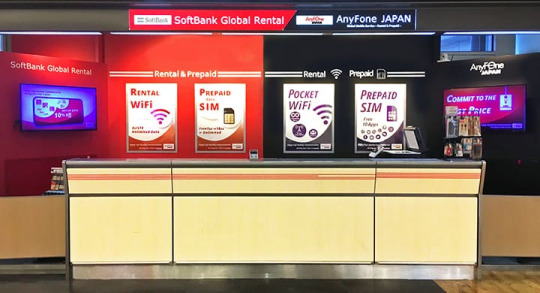
Aquí en este puesto compramos el SIM, no puedo creer que haya encontrado foto en el internet del lugar jaja. Pero sí, lo compramos del puesto del lado derecho que se llama "AnyFone Japan" y conseguimos el de Datos Ilimitados por 15 días por ¥8,800.
IDIOMA
En Japón se habla el japonés *duh*. No hay un segundo idioma fuerte que se maneje ni nada de eso, así que si vas a ir allá te recomiendo:
A. Aprender el idioma
B. Aprender las palabras y frases esenciales y descargar Google Translate, sí, descárgalo, no dependas del wifi siempre porque ¿qué haces cuando no tengas señal y lo necesites? (es raro, pero pasa).
Mi amiga y yo optamos por la opción B.
(¡Ah! al final de esta sección de Idioma te voy a recomendar otra app para traducir textos en imagen)
Olga ha estudiado el japonés por ya cierto tiempo, y a pesar de que el idioma es complejo, aún así fue de grandísima ayuda que supiera preguntar cosas básicas como:
¿dónde está...? ¿cuánto cuesta? ¿qué es esto? etc. etc.
Aprende a decir "buenos días, hola, mucho gusto, muchas gracias, me llamo X, disculpe, con permiso, perdón, buenas noches, etc."
Es de gran cortesía que tú al llegar a un país les hables en su idioma, no importa si no lo manejas al 100%, el hecho que te esfuerces en comunicarte con ellos es de gran valor para quien sea; demuestras tu respeto por el país, su gente y su cultura. Aparte, es un rompehielos. Es casi casi como si se estuviera diciendo "te voy a ayudar porque me respetas e intentaste las cosas a mi manera".
Conclusión: aprende las palabras y frases esenciales y descarga Google Translate.
Por cierto, en Tokyo, al ser la gran urbe y capital, es más común encontrarte con gente que hable inglés, pero no des por hecho que lo hagan. En el resto del Japón es raro que la gente hable otro idioma que no sea el nacional.
Algunas palabras y frases que te pueden ayudar son:
Hola: Konnichiwa
Adiós: Sayonara
Gracias: Arigato
Muchas gracias: Arigato Gozaimasu (la u no se pronuncia)
Disculpe: Sumimasen
Perdón: Gomenasai o Gome (más informal)
Por favor: Onegai Shimasu (la u no se pronuncia)
Sí: Hai (la h se pronuncia como j en español)
No: iie (se pronuncia I-E, no YE, tú dices YE y no tiene sentido)
Buenos días: Ohayo Gozaimasu (ojayo gozaimas, la u no se pronuncia)
¿Cómo estás?: Genki desu ka? (la u no se pronuncia)
Yo soy / Me llamo: Watashi wa (tu nombre) desu ka. (la u no se pronuncia)
¿Cuánto cuesta?: Ikura desu ka? (la u de "desu" no se pronuncia)
¿Dónde está...?: Doko (lugar) desu ka? (la u no se pronuncia)
Si puedes aprenderte los números aunque sea del 1 al 10 ya es más que suficiente jaja. Te ayuda mucho a la hora de pedir comida o cositas básicas.
Ahora sí, ¿quieres traducir textos o imágenes? San Google te ayuda. A pesar que tengas Chrome (en mi caso) en el cel, te recomiendo descargar la app de Google ya que al abrirla te dará la opción de "traducir imagen". Te comparto las apps que yo usé para traducir tanto diálogo como imagen:
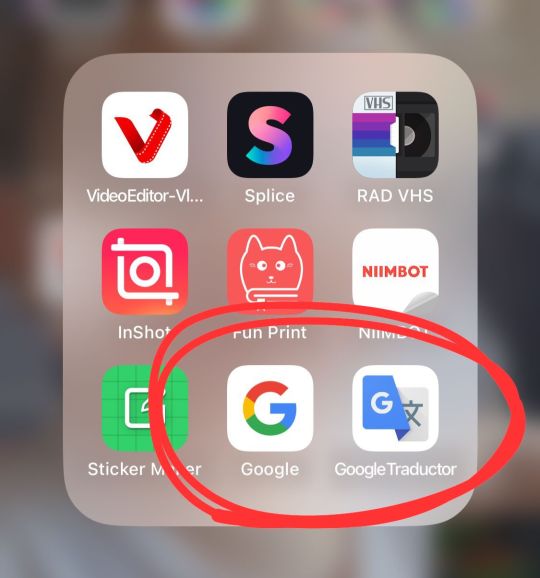
Apps para traducir textos, diálogos e imágenes.


CULTURA
Japón es un país de mucho respeto, mucha tradición y *hermoso en todos sus sentidos* jaja :3
A todas las personas que saludes y de quienes te despidas hay que hacer la reverencia. ¿Por qué? Porque así se maneja allá "como en Roma haz como los romanos" y porque aparte significa respeto a quienes te diriges.
Algo que nos sirvió bastante fue: observa e imita.
¿Qué hace el japonés al entrar a x lugar? ¿Cómo se saludan y despiden? ¿Cómo agradecen? ¿Cómo pagan? Allá no existe el pagar propina, algunos lo ven hasta casi como un insulto porque significa que nos les pagan lo suficiente por lo que recurren a la ayuda de otros (escándalo), cosa que no sucede.
Allá se quitan los zapatos al entrar a una casa u hotel para no ensuciar el piso y por ende te prestan pantuflas.
Allá no se come en la calle mientras caminas, es una falta de respeto a la gente a tu alrededor porque nunca sabes qué accidente puedas tener por estar distraído comiendo o bebiendo y podrías manchar o salpicar a alguien. Es muy real lo que te platico por más exagerado que suene.
Allá se camina del lado izquierdo, aunque depende mucho de la ciudad, parque, etc.
Te recomiendo que si no tienes idea de cómo funcionan las cosas allá observes siempre, pregunta o busca en línea. :)
TRANSPORTE
Muchas personas nos comentaron que era bastante conveniente comprar el JR Pass. ¿Qué es eso? El Japan Rail Pass.
El Grupo Japan Railways es una de las varias compañías que hay de transporte en Japón y al comprar este pase te permite subirte y bajarte cuantas veces gustes del tren y metro para poder viajar por el país.
¡OJO! Debes checar que el tren y metro al que te subas pertenezca al servicio del JR Pass, no todo está incluido.
También muy importante saber, el JR Pass solo lo puedes comprar FUERA de Japón ya que es un "motivante" de parte del gobierno japonés para que los turistas extranjeros visiten el país. Checa su página web aquí.
El JR Pass puede ser muy conveniente para muchas personas debido a que les permite viajar (casi) sin restricciones; el único detalle que mi amiga y yo vimos fue el precio. Recientemente los precios por el JR Pass han subido bastante y haciendo cuentas nos iba a salir mejor comprar por nuestra parte el transporte que usáramos.
Así que ¿qué hicimos mi amiga y yo? Pagamos cada transporte individualmente, yo pagando con efectivo y mi amiga con la Suica que descargó en su teléfono.
Y vaya que usamos de todo tipo de transporte:
camión, metro, tren, Narita Express (el tren que te lleva directo de y al aeropuerto de Narita), Shinkansen (tren bala)... y hasta eso no estuvo tan caro (para estar pagando en ¥enes).
¿Qué es la Suica? Es una de las tarjetas de servicio de transporte en Japón. Es recargable, es digital y es una chulada.
Tan fácil como descargarla gratis desde la App Store o Play Store, ligarla a tu tarjeta de crédito y abonarle de poco en poco las cantidades que necesitas. Hay otras tarjetas similares como la ICOCA o Pasmo. Tengo entendido que todas ofrecen la misma facilidad para pagar tu transporte.


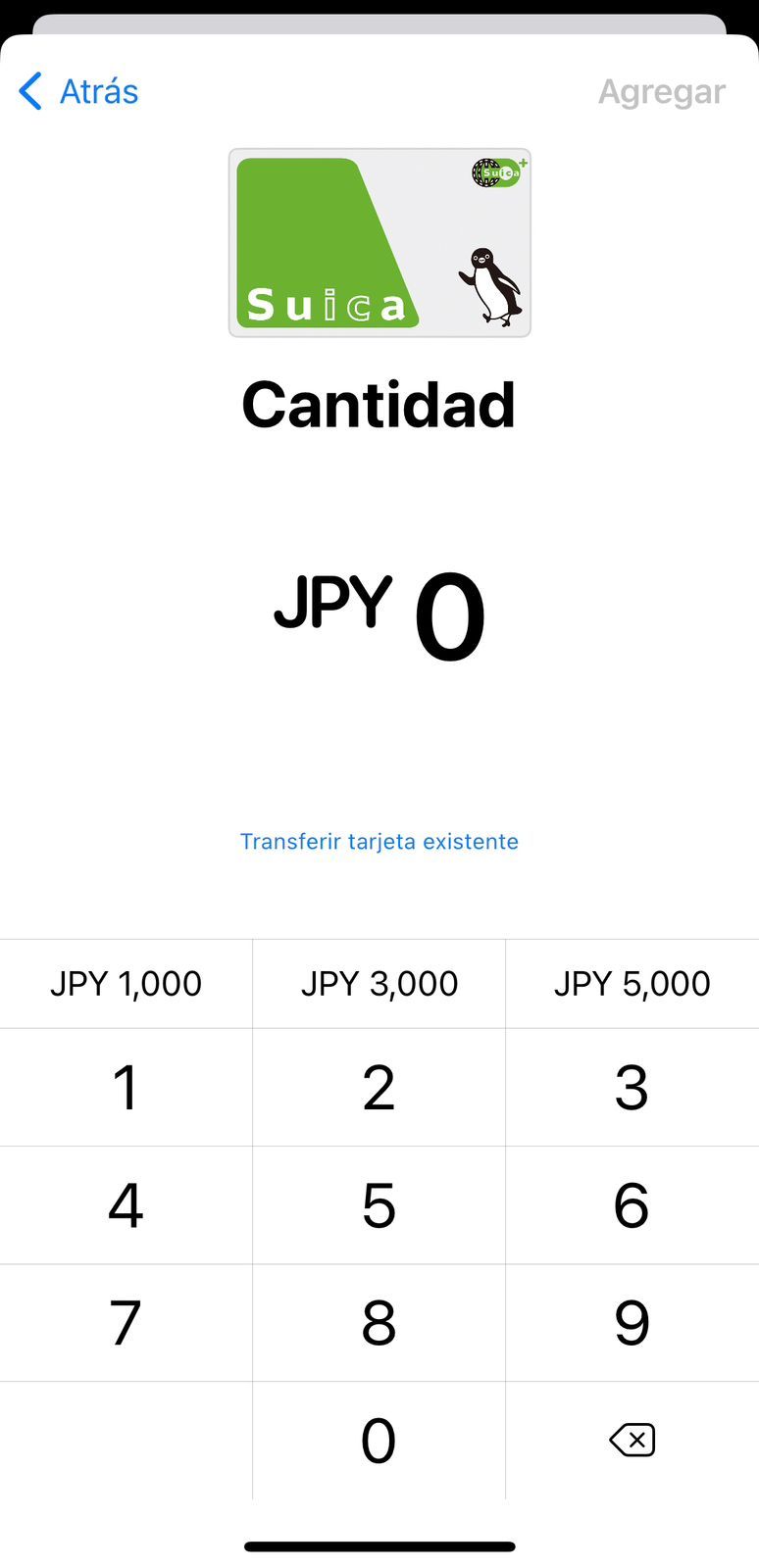
Lo padre es que al usar la Suica desde tu cel puedes ir viendo cuánto te cobra el servicio de transporte.
Por cierto, la Suica NO incluye el Narita Express o Shinkansen. Hay que estar checando siempre qué sí y no te incluye para no confiarte y llegar bien sobres a la estación de metro pensando que pasarás como Juan por su casa.
Como bien es sabido, el transporte en Japón es ULTRA PUNTUAL. Sí existe uuuuno que otro retraso, pero es muy raro; a nosotras nos tocó un retraso en todo el viaje y fue avisado, anunciado y mostrado pa que nadie se quedara con la duda.
Hablando de dudas, si las tienes, pregúntale a la gente que trabaja en las estaciones y andenes. El japonés es muy amable e independiente de que sea su trabajo, procurará ayudarte siempre que pueda. A nosotras varias personas a quienes les preguntamos dónde quedaba X estación o salida, nos llevaron (literal) hasta la entrada del lugar por el que preguntamos (bendito Google Translate que nos ayudó a darnos a entender).
ultra tip: USA GOOGLE MAPS.
Será la mejor decisión que puedas tomar respecto al transporte. Solo úsalo y ya no batalles. Google Maps te proporciona las líneas de metro, tren, los tiempos, las horas, el precio, las rutas, todo, TODO. Usa Google Maps. FIN.
COMIDAS
Qué decir de la comida japonesa. ES DELICIOSA. ¡Y tan variada! Mucha gente cree que es puro arroz o ramen, pero lejos está la realidad de tal idea. Los platillos varían por región, por ciudad, por pueblo, si estás en la costa, si estás muy dentro de la tierra, si estás entre cerros o si estás en el campo.
¡Y es económica!
Olga y yo comimos como reinas estando allá porque los precios son bastante accesibles; desde los restaurantes hasta los puestos e inclusive las tienditas. Ahora también, obvio hay que ver a dónde vas a comer, tampoco esperes que los restaurantes de lujo tengan platillos por ¥500, seamos razonables.
Lo que sí te diré es que no dudes jamás en ir a un 7-Eleven, Family Mart o Lawson a comer algo BBB. Tienen platillos bien servidos, variados, muy ricos y listos para llevar. Son una excelente opción para cuando tienes que tomar algo para el camino o simplemente quieres llegar a tu lugar de alojamiento, cenar y a dormir.
Aquí te van unos ejemplos de los costos EN LAS TIENDITAS para que te des una idea (los precios pueden variar, estos son estimados). Los precios están en yenes; puedes convertir los yenes a tu moneda y viceversa aquí.
Vasito de sopa miso en polvo (sopa instantánea con agua caliente): ¥100 (yo me tomaba estas como desayunos)
Bolsa de papitas: ¥110 - ¥120 - ¥150 ¥180 (estas las comprábamos como snacks mientras paseábamos)
Plato con curry udon: ¥350 - ¥500
Bote de agua: ¥110
Bote de té verde (otcha): ¥135
Bote de té negro con leche (milk tea): ¥180 - ¥200
Cheese curry bread (lo amé): ¥180
Plato de ramen con pollo y verduras: ¥440
Plato de tonkatsu con arroz y verduras: ¥560
Sándwiches de huevo (deliciosos): ¥260
Sándwich de pollo teriyaki con huevo y lechuga: ¥315
Y no te limites en visitar los restaurantes, la comida es exquisita y estoy segura que cabe en tu presupuesto.
Mi amiga y yo no nos limitamos en probar nada, lo veíamos, se nos antojaba, lo comprábamos. Listo, nadie nos cuenta a qué saben los wagashi, el mochi, el shaved ice con pasta de frijol dulce, el dorayaki, el okonomiyaki, el dango, y la lista sigue y sigue y sigue.
ALOJAMIENTO
Como cualquier otro lugar del mundo, Japón tiene bastantes opciones de alojamiento: hoteles, hostales, ryokans, etc.
Mi recomendación es que el lugar que busques, antes de aceptarlo, leas todas las reseñas de la gente.
Booking es muy fuerte en Japón. Ellos se apoyan bastante de este sitio para las reservaciones y confirmaciones y nosotras pudimos viajar sin problema gracias a este sitio. También está Hostel World.
¡POR CIERTO! Si buscas una experiencia ultra japonesa en cuestión de alojamiento, busca los RYOKAN.
El Ryokan es una posada tradicional japonesa, o sea: piso de tatami, cama de futón, mesas bajitas con sus cojines para que te sientes. Nosotras lo amamos porque era lo que buscábamos y queríamos.
Los dos ryokan en donde nos quedamos fueron:
El Business Ryokan Suzusei: está en las afueras de Fuji. Nos costó ¥4,500 la noche. El dueño, Suzuki San, no habla más que japonés, así que San Google Translate fue nuestro mejor amigo. Para reservar hay que llamar por teléfono o enviarle un mail (que está disponible en la página). Suzuki San fue un gran anfitrión y a pesar de la barrera del idioma, la cual pudimos manejar un poco gracias al traductor, nos trató con mucho respeto. Este ryokan es un poco sencillo, cuenta con lo básico: baño, regadera, tina con agua calientita (onsen), lavadora, micro y frigo bar. Aquí nos hospedamos porque tomamos unos tours con Turismo Victoria (gran servicio) tour que por cierto más adelante les platicaré en "Experiencias".
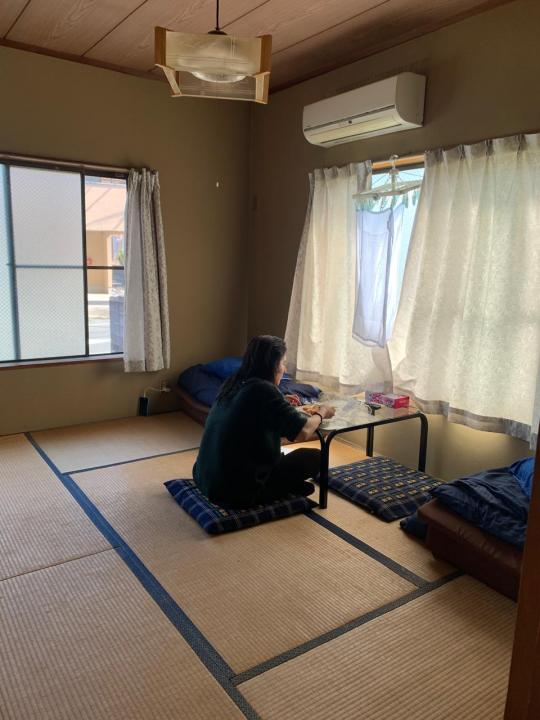
Kyo no Yado Sangen Ninenzaka: está cerca del famoso templo Kiyomizu Dera. Nos costó el equivalente a $4,572 MXN la noche. Nos atendió Shu, un gran anfitrión y tipazo de persona. El lugar está BELLÍSIMO, muy limpio, muy ordenado, silencioso, y con gran detalle de atención por parte de Shu. Para este Ryokan pedimos también si nos podían servir un desayuno tradicional japonés que tenía un costo extra, pero eequis, ¡ya estábamos ahí!. Este lugar también incluye una tina en donde te calientan el agua, le ponen sales y descansas deli. Altamente recomendado este segundo Ryokan.

Aquí con nuestro desayuno japonés delicioso: sopa miso, salmón, arroz blanco, ensaladita de espinaca con zanahoria y aderezo miso, huevito, pepino, té verde... DE-LI-CIO-SO.
EXPERIENCIAS
Hay tanto TANTO que ver en Japón que lo mejor es iniciar haciendo una lista. Olga y yo comenzamos una lista de los lugares que nos gustaría conocer; primero escribimos absolutamente todo lo que nos daba curiosidad, lo que queríamos visitar, etc.
Con base en esa lista fue que fuimos haciendo el mapa del viaje: dónde está cada uno de los destinos que queríamos conocer. Ver qué destinos coinciden en la misma ciudad o están de camino entre un lugar y otro. Gracias a esto pudimos organizar nuestras paradas y darnos una idea de cuánto tiempo nos ocuparía cada lugar. Los lugares que de plano quedaban demasiado fuera de ruta se descartaron y ni modo, quedarán para el próximo viaje allá.
Nosotras fuimos 13 días en total de viaje (sin contar los días de vuelos). En esos 13 días ¿cuál es el mayor provecho que podíamos sacarle al país?
Este es uno de los borradores de nuestro viaje:

Pusimos las fechas que íbamos a estar ya en Japón y fuimos agregando los destinos dependiendo de nuestra ciudad base.
Aquí van las experiencias que tomamos y que les recomiendo ampliamente (adjunté las ligas de los lugares en los títulos de cada actividad):
Museo del noodle: (Yokohama) llega temprano porque son x cantidad de boletos por hora, si ya no alcanzas boleto, so sorry chavo, ya no pasas.
Turismo Victoria: (Fuji y Hakone) tours en español que te llevan por Fuji, Hakone y Shizuoka y sus alrededores (Templos sintoístas, budistas, Toris enormes, el monte Fuji, pueblos ninja, villas antiguas, lagos, volcanes, cascadas, carreteras musicales, un barco tipo pirata). BUENÍSIMO. Nos sentimos muy cómodas, grupos pequeños, visitamos lugares preciosos, comimos delicioso; nuestro guía Frank un tipazo. Terminamos muy contentas. Gran servicio y atención.
Parque Ghibli: (afuera de Nagoya) Recomendado más que nada para los fans del estudio de animación. No es como Disney en donde la música explota por todos lugares y hay juegos mecánicos por doquier, no, este es un lugar en donde quien conoce las películas, le gustan y/o es fan, se puede pasear entre parques ambientados como los entornos de las películas de Ghibli. Es hermoso, es amplio, es pacífico y está lleno de detalles; para reservar recomiendo pedir ayuda de Junko Arai (también está así en FB), quien nos consiguió los boletos y nos dio gran servicio, porque la venta de boletos está ULTRA peleada.
El gran templo de Buddha en Nara: (Nara) Qué cosa tan más impresionante y majestuosa. Te seré honesta, Nara es conocido por sus venados que hacen reverencia, pero los pobres animales están tan cansados de tanta gente por todas partes que una vez que llegas ahí hasta te dan ganas de disipar a toda la gente que está alrededor de ellos porque hasta parece que los hostigan. Ve al templo de Buddha; es inmenso el templo y sus guardianes de casi un milenio son bestiales. Las fotos no le hacen justicia a cómo se ve el templo en vivo. wow wow y más wow.
Onsen (baños de aguas termales): (Kyoto) Estas aguas termales fueron lo mejor del mundooooo. Para entrar a estos tradicionales baños japoneses es importante saber que: están divididos en hombres y mujeres, entras completamente desnud@ y antes de entrar debes bañarte (pa que no ensucies las aguas, claro está). Y si te sientes un poco intimidad@ por estar al natural, créeme, serás una encueradilla más ahí, a nadie le importa, y eso lo hace aún mejor.
¡Renta de kimonos en Kyoto!: (Kyoto) Seas hombre o mujer, vístete en un kimono hermoso y paséate por las calles de Kyoto enfundad@ en estas prendas tan bonitas. El proceso es muy padre y no es muy caro.
Teatro tradicional de geishas: (Kyoto) Olga sugirió este lugar del que yo jamás había escuchado y qué gran decisión fue haber comprado los boletos. Es un teatro bellísimo en donde las músicas tocan espléndidamente, cantan canciones tradicionales y todas las actrices interpretan diversos papeles e historias antiguas japonesas. Recomiendo sí rentar de esos aparatitos auditivos que te cuentan la historia en inglés para saber qué está pasando.
Naked Sakura Festival: Este festival al que fuimos dura solo un cierto tiempo que es la época de florecimiento de las Sakuras. Independiente de que vayas o no a este evento, te recomiendo que busques actividades así de este tipo, que no sean solo los tíiipicos lugares turísticos porque podrían agregarle un detalle extra y bonito a tu viaje. Solo si quieres, claro jaja.
Ceremonia de té: (Kyoto) Esta actividad fue la cereza del pastel de Kyoto, ciudad hermosísima que disfrutamos enormemente. Una ceremonia de té tradicional que te da un vistazo a cómo tanto antes como ahora se realizan estos pequeños eventos de bebida de té y el convivio que le sigue. Te visten en un kimono y disfrutas de una experiencia única. Aparte de que el staff es súper buena gente. ¡Altamente recomendado!
Museo samurai y ninja: (Tokyo) Este lugar yo no tenía idea que existía y jamás se me hubiera ocurrido buscarlo hasta que me lo recomendó mi hermano. WOOOOAAH!!! Es el museo interactivo más divertido al que hemos ido, LANZAMOS ESTRELLAS NINJA Y CORTAMOS BAMBÚ CON UNA KATANA. Resérvalo, solo resérvalo, vale toda la pena. Ya. Hazlo. No le pienses más. Es una inversión. Bai.
También fuimos a muchos otros lugares, como en Fushimi Inari, el mercado Nishiki, el palacio imperial, Akihabara, Shinjuku, centro de Nagoya, etc, destinos que no requieren reservación pero que sí recomiendo ir temprano para evitar TANTA gente.
¡Ah y súper importante! Si puedes comprar con anticipación HAZLO. Mucho del Japón se maneja con reservación previa, así que si tienes un lugar al que quieras ir COMPRA TU BOLETO CON ANTICIPACIÓN.
Te sorprenderías al ver cuánto lugar estaba ya sobrevendido aunque faltaran semanas para la fecha. Supongo que tiene que ver con la cultura de la organización y planeación que tiene el japonés. Ya para los pequeños detalles sí puedes ser más espontáne@.
DINERO Y PRESUPUESTO
Dinero
Para sacar dinero recomiendo lo que todo mundo dice: sacar de los cajeros del 7-Eleven. Es una chulada y es muy fácil. Yo me llevé mi tarjeta de BBVA en donde me cobraban unos ¥220 de comisión y procuraba por lo mismo sacar buenas cantidades de dinero para no tener que estar yendo y viniendo. PEROOO Olga fue la persona más inteligente aquí y ella pidió con anticipación su tarjeta NU.
Con esta tarjeta NO LE COBRABAN COMISIÓN 😲 Aparte de que por cada compra que hacía se le abonaba a la tarjeta x cantidad de regreso a su cuenta. No sé cuánto tiempo vaya a durar esa prestación que te da la tarjeta pero a nadie veo quejarse por ello ¿verdad?
Si vas a pagar con tu tarjeta de crédito nomás sí checa cuánto te cobra en pesos, porque los montos se van juntando y lo que me sucedió fue que (de las pocas veces que la usé) los montos quedaban pendientes por cobrar mientras estuve en el país del sol naciente, llegué de regreso a México y TRAZ se me soltó todo el dinero que le debía a la tarjeta. Por fortuna todo qued�� dentro del presupuesto.
Presupuesto
Te platicaré de mi presupuesto personal con el que conté para todo el viaje y en qué estimé que se irían x ciertas cantidades:
Ahorré un total de $90,000 para el viaje de dos semanas, dentro de esta cantidad debían estar incluidos los vuelos, el hospedaje, las actividades, transportes, comidas y los extras.
¿Qué es lo que recomiendo hacer para que vayas armando TU propio presupuesto?
PRIMERO, checar los precios de los vuelos, las actividades que quieres realizar y los hospedajes en los que te gustaría o alcanza quedarte. Una vez que tengas esto comienza a tomar forma tu presupuesto.
SEGUNDO, el estimado de gastos de una semana en Japón es de mínimo $25,000 MXN. Nosotras nos quedamos 2 semanas, así que ahorré esos $50,000 mínimos que la gente sugiere llevar.
TERCERO, ya habiendo comparado los precios de las cosas comienzas a comprar:
Primero los vuelos
Luego las actividades. Recomiendo comprar las actividades antes que los hospedajes porque si x lugar que quieres visitar no tiene cupo para ti o se le acabaron las entradas, no tiene sentido quedarte entonces en esa ciudad o pueblo si lo único que querías realizar era la visita a ese lugar en particular.
Después los hospedajes.
El resto de las compras ya van saliendo conforme avanzas en tu viaje por Japón; camiones, munchies, metros, recuerditos, postres, la camisa, almuerzos, trenes, el paraguas (literal), la cena, etc.
Nosotras no quisimos escatimar, fuimos por primera vez a Japón y queríamos darnos chanza de probar todo lo que quisiéramos, así que ese presupuesto nos alcanzó bastante bien.
Depende mucho también el tipo de turismo que quieras hacer. Nosotras hicimos más que nada una combinación de cultura, naturaleza y gastronomía. Hay gente que quiere hacer un turismo más anime u otaku, hay otros que quieren hacer un turismo más gastronómico, otros que quieren hacer un turismo de parques de diversiones (Tokyo Disney, Universal Studios Japan, el parque de Naruto y Boruto, el PokePark, etc.). Dependiendo el tipo de paseo que quieras hacer es como se va creando tu presupuesto estimado.
Si te es útil, estos fueron los gastos mínimos que tuve (digo mínimos porque no guardé tooodos los tickets de las compras que hice):
Transporte público: ¥28,545
SIM japonesa datos ilimitados: ¥8,800
Tienditas (7-11, Family Mart, Lawson, etc.): ¥16,068
Lockers, comidas, recuerditos, entradas, etc: ¥232,467
Se recomienda usar efectivo para poder tener un mejor control de tus gastos, yo saqué un total de ¥150,000 y el resto fue tarjeta.
MALETA
Las dos nos fuimos mentalizadas en que llegaríamos con nada y nos iríamos con todo jaja, así que parte de nuestro presupuesto fue destinado para comprar una maleta estando allá en donde nos cabrían las cosas que iríamos agregando a nuestro viaje.
Primero te diré sobre nuestra mochila de ida y luego sobre nuestra maleta de regreso.
Mochila de ida
Literal nos fuimos con una de esas mochilas tipo campamento que puedes encontrar en Walmart o Decathlon con los mega básicos:

Esta lista es para el kit de limpieza personal. En los hoteles en Japón te ofrecen shampoo y jabón, pero no está de más llevar el tuyo.

Esta es la lista de ropa que hicimos, no nos llevamos las chanclitas y qué bueno que no, hubieran salido sobrando. Estando allá nos compramos un jabonsito para ropa y aprovechábamos para lavar nuestras ropas juntas y listo.
RECOMIENDO AMPLIAMENTE EL ESPONJABÓN. Al chile debería de patrocinarme Esponjabón porque siempre lo recomiendo jaja, es muy bueno y yo lo transporto en una bolsita ziploc pequeña. Lo amo.
Maleta de regreso
Estando allá en Japón unas tiendas muy comúnes que están en todas las ciudades son las de Bic Camera, ahí vas a la sección de maletas y buscas una que esté en descuento y que sea de buena calidad. Nosotras compramos de la marca American Tourister y nos salió bastante buena para guardar y traernos todas las cositas que fuimos comprando.
LA COMPAÑÍA
Antes que se me pase, porque sí es importante mencionarlo, es la compañía con la que irás al viaje. En mi caso particular, Olga y yo tenemos una amistad de más de 10 años; hemos vivido juntas, hemos estado en obras de teatro juntas, nos hemos dado asilo, hemos tenido conversaciones profundas y vagas y hemos tenidos nuestros altibajos. ¿Y qué tiene esto que ver?
Puede no parecerlo, pero sí hace toda la diferencia que la persona con la que vayas al viaje sea de confianza para platicar las cosas. Es obvio que van a haber momentos de discusión, no esperes que en toooodo el viaje no vayan a haber situaciones de desacuerdos; es más que claro que se presentarán ocasiones en donde (en nuestro caso) ambas no queramos lo mismo, pero lo importante de todo esto es LA COMUNICACIÓN.
Suena como cliché, pero si tanto lo escuchas es porque es cierto. La comunicación es clave para que un viaje de este tipo sea lo más disfrutable posible.
Algo que nos funcionó mucho a Olga y a mi es que nos dijimos desde un inicio que si habían lugares a los cuales una de nosotras no quería ir, no sería un problema, una se va por un lado, la otra por el otro y a x hora nos encontraríamos en cierto lugar... o simplemente nos escribíamos para ver cómo iba una de nosotras; la importancia de los datos ilimitados eh ;)
Se dice que en un viaje tú conoces verdaderamente a una persona, y es cierto; claro que llegamos a tener discusiones Olga y yo, es normal que suceda, somos personas diferentes con gustos diferentes, el detalle es que se hagan siempre con respeto, una persona escuchando a la otra y viceversa y que se entable un diálogo. Admitir que una se equivocó, le pide una disculpa a la otra y la fiesta en paz. Naaada de rencores guardados ni orgullos lastimados. Esos no tiene cabida en un viaje de este tipo porque solo amargan la existencia.
Así que si tú eres de gran orgullo o ego, mi pésame chav@, no eres de ayuda en el viaje, o lo dejas a un lado o simplemente no vayas... o ve sól@ y ya, no le arruines la fiesta a los demás :)
Quizás suene un poco crudo lo que digo, pero es verdad, todos queremos disfrutar del viaje y no se vale que por los humos de una persona se les estropee a los demás. Hay que ser considerados.
----------------
¡Listo! Quizás está un poco larga la publicación, pero preferí no escatimar en cuanto a mis recomendaciones para visitar por primera vez Japón.
Si tienes dudas o comentarios no dudes en escribirlos.
¡Gracias por leer!
FIN :p
Caty Natasha
p.d. no sé porqué no me deja contestarles a quienes me escriben ¡sí los leo y les quiero contestar! pero no aparecen mis comentarios :(
#japon#japan#tourism#turismo#turismo japon#japan tourism#tour#tour japon#vacaciones#cultura#comida#comida japonesa#buddha#tori#shinto
15 notes
·
View notes
Text
Although I see explanations of the Japanese fixation on blood type point to Furukawa in the 1920s and Nomi in the 1970s, I still wonder if the Bokuzukin air raid hoods fed into it at all.

A fabric tag sewn within reads: "Sendai City, Koushoji Tori 51", with the owner's name and blood type: "Onodera Keiko, Type B".
These protective hoods often featured their owner’s name and blood type. Surely seeing your crush’s blood type advertised during air raid drills leaves some kind psychological of mark.
3 notes
·
View notes
Text
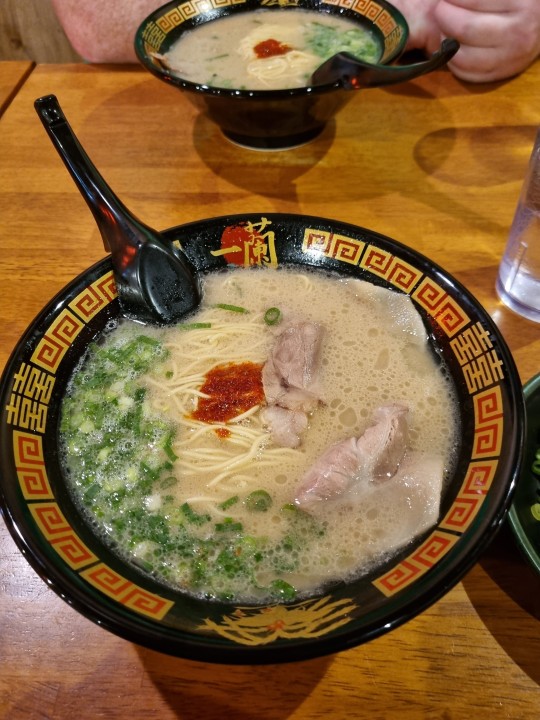
#ichiran ramen#ramen#food#japan#japan tourism#visiting japan#instant ramen#instant noodles#there is so many nicer ramens in japan!#poll
10 notes
·
View notes
Text
Japan Sees Record 40% Surge in Indian Tourists | Farepayer Travels
Tokyo, Japan – January 2025 – Japan has witnessed a historic surge in tourism from India, with a record-breaking 233,000 Indian visitors traveling to the country between January and December 2024. This marks an astounding 40% increase compared to 166,394 visitors in 2023, according to the Japan National Tourism Organization (JNTO) Delhi Office. The dramatic growth is attributed to enhanced air connectivity, competitive promotional fares, and expanding tourism offerings. If you’re looking for the best International Tour Package from Delhi, Farepayer Travels offers customized Japan tours, ensuring a seamless and memorable experience.

Unprecedented Growth in Indian Arrivals
The rise in Indian tourists reflects a growing affinity for Japan’s rich cultural heritage, modern attractions, and natural beauty. In May 2024, a peak month for Indian family vacations, Japan recorded 29,068 Indian arrivals, a 61.6% year-on-year increase. Meanwhile, 27,206 Indian tourists visited Japan in December 2024, an impressive 83% growth compared to the previous year.
This surge aligns with India’s summer holiday season and the conclusion of Japan’s Golden Week, providing an ideal travel window for Indian families and solo travelers alike. Farepayer Travels ensures you get the most out of your journey with exclusive International Tour Packages from Delhi, offering hassle-free bookings and personalized itineraries.
Enhanced Connectivity Fuels Growth
Japan’s tourism boom from India has been significantly supported by better air connectivity. In 2024, key developments included:
Expansion of the Bengaluru-Tokyo route to five weekly flights.
A winter 2024-2025 schedule featuring 26 direct flights per week from Delhi, Mumbai, and Bengaluru to Japan.
New airline codeshare agreements, ensuring seamless connectivity from multiple Indian cities.
These improvements have made Japan more accessible than ever for Indian tourists. Farepayer Travels simplifies your journey with customized International Tour Packages from Delhi, including flight bookings, accommodations, and guided tours. Whether you’re a solo traveler, honeymooner, or corporate group, we cater to all travel needs.
Beyond the ‘Golden Route’: New Destinations Gain Popularity
While first-time Indian tourists typically explore the famous ‘Golden Route’—covering Tokyo, Osaka, Kyoto, and Hiroshima—JNTO has been actively promoting new scenic destinations to Indian travelers, including:
Hokkaido – Known for powder snow, vibrant flower fields, and winter sports.
Tohoku – Famous for breathtaking autumn foliage.
Tateyama Kurobe Alpine Route – Featuring the majestic ‘Snow Wall’ experience.
If you’re planning your next trip, Farepayer Travels’ International Tour Package from Delhi covers both the classic attractions and hidden gems, ensuring an unforgettable experience.
MICE Tourism Sees Significant Growth
The Meetings, Incentives, Conferences, and Exhibitions (MICE) tourism sector has also experienced notable expansion. Indian corporate groups are increasingly choosing Kansai and Hiroshima over traditional Tokyo-based events, reflecting a shift in business tourism trends.
For seamless corporate travel, Farepayer Travels’ International Tour Package from Delhi offers specialized MICE arrangements, including business conferences, team-building events, and corporate retreats in Japan.
Japan Prepares for Expo 2025: A New Tourism Boost
Looking ahead, Japan is gearing up to host Expo 2025 Osaka, Kansai, Japan, an international event expected to attract even more Indian visitors. With Japan’s continued efforts to improve connectivity, introduce new travel experiences, and promote diverse destinations, the country is well-positioned to sustain and accelerate its Indian tourism boom in 2025 and beyond.
For those planning their next trip, Farepayer Travels provides the best International Tour Package from Delhi, ensuring a stress-free and memorable journey.
Book Your Dream Trip with Farepayer Travels!
Japan now offers not just a vacation, but an unforgettable journey—blending ancient traditions with futuristic marvels, all within a country that warmly welcomes Indian travelers. Don’t miss out—explore our exclusive International Tour Packages from Delhi and make your Japan travel dreams a reality!
0 notes
Text
With Hana Kawashima Mifu (25.01.12)
#juice translations#hello pro#hello pro blog#hello project blog#hello! project#idol translation#japan#idol#japanese#japanese language#juice juice members#juice juice#juicejuice#mifu kawashima#kawashima mifu#Mifu#angerme#Anju#goto hana#Hana goto#Hanana#hello pro translation#blog translations#hello project member#Enoshima#learn japanese#japanese translation#japanese idol#Japanese idol group#japan tourism
0 notes
Text
A Year as a Tour Leader
Embarking on this journey as a tour leader in Japan has been both exhilarating and challenging. As I approached my eight-month mark, the annual performance review loomed large in my mind. The departure of two fellow guides had me reflecting on my own small mistakes during tours, perhaps amplified by burnout in the tourism industry and overwork. Self-Awareness A significant part of our yearly…
#Bai Lan#Balancing Work and Life#Blog#Burnout#Career Development#Creative Careers#Cultural Insights#Eastern Philosophy#Japan#japan blog#Japan Tourism#Japanese Culture#laidback#laidback life#laidback lifestlyle#laidbacklife#laidbacklifestyle#Mindfulness#my laidback life#Navigating Ambition#Performance Review#Personal Growth#Resilience#Self-Awareness#Storytelling in Tourism#Tour Leader#Tourism Industry Challenges#Two Jobs#Work-Life Balance
0 notes
Text

Happy Culture Day, Japan!
#Japan#Japanese#map of Japan#visit Japan#travel to Japan#japan tourism#geography#t-shirt#graphic t-shirts#t-shirt collection#travel#traveltime
0 notes
Text
What's the Best Way to Prepare for a Trip to Japan?
Planning a trip to Japan is an exciting effort that promises a unique blend of tradition and modernity. But to truly enjoy everything this fascinating country has to offer, it’s essential to ask: What’s the best way to prepare for a trip to Japan? From understanding cultural nuances to navigating the language barrier, proper preparation can significantly enhance your experience. This article will…
#budgeting tips#cultural etiquette#cultural tips#health tips#Japan adventure#Japan attractions#Japan budget#Japan exploration#Japan holiday#Japan itinerary#Japan packing#Japan tips#Japan tourism#Japan Travel#Japan travel guide#Japan travel tips#Japan vacation#Japan visit#Japanese culture#Japanese Etiquette#Japanese phrases#JR Pass#Kyoto travel#language guide#Osaka guide#packing tips#seasonal packing#Shinkansen#sightseeing#Tokyo guide
1 note
·
View note
Video
youtube
Shirakura Gorge
#youtube#Shirakura Gorge#白倉峡#hamamatsu city#shizuoka hamamatsu#foreigners in hamamatsu#tourism in hamamatsu#hamamatsu attractions#Hamamatsu walk#japan#japan walk#japan tourism#japan attactions
0 notes
Text
Rediscovering Heritage: Top Historical and Cultural Tourism Destinations

Historical and Cultural Tourism: Exploring the Past
Planning Your Next Adventure? Get Expert Help at www.sarvodayaholiday.com!
In an era where modernity often overshadows tradition, historical and cultural tourism offers a unique opportunity to step back in time and immerse oneself in the rich tapestry of our global heritage. This type of travel not only broadens our understanding of different cultures but also allows us to appreciate the historical events and figures that have shaped our world. Here, we explore some destinations that stand out for their historical and cultural significance and recommend must-visit museums, historical sites, and cultural landmarks.
1. Rome, Italy
The Colosseum: As one of the most iconic symbols of ancient Rome, the Colosseum is a testament to the architectural prowess and gladiatorial history of the Roman Empire. A guided tour can provide fascinating insights into its construction and the events that took place there.
Vatican Museums: Home to an immense collection of art and historical artifacts, the Vatican Museums offer a journey through centuries of religious and cultural history. The highlight, of course, is the Sistine Chapel with its awe-inspiring ceiling painted by Michelangelo.
Pantheon: This well-preserved Roman temple, now a church, is renowned for its magnificent dome and oculus. It serves as a reminder of the architectural innovation of the ancient Romans.
2. Kyoto, Japan
Kinkaku-ji (Golden Pavilion): This Zen Buddhist temple is famous for its stunning gold leaf-covered exterior and its beautiful surrounding gardens. It is a symbol of Kyoto’s rich cultural heritage and peaceful aesthetics.
Fushimi Inari Shrine: Known for its thousands of red torii gates, this Shinto shrine offers a picturesque hike up Mount Inari. Each gate is donated by individuals and businesses, reflecting a tradition that dates back centuries.
Gion District: Kyoto’s historic geisha district is filled with traditional wooden machiya houses and offers a glimpse into the city’s past. Visitors can enjoy traditional tea ceremonies and cultural performances.
3. Cairo, Egypt
Pyramids of Giza: These ancient wonders are synonymous with Egypt’s rich historical heritage. A visit to the Great Pyramid, the Sphinx, and the surrounding pyramids is a journey back to the time of the pharaohs.
Egyptian Museum: Located in Tahrir Square, this museum houses a vast collection of ancient Egyptian artifacts, including the treasures of Tutankhamun. It is a treasure trove for history enthusiasts.
Islamic Cairo: This area is known for its medieval mosques, madrasas, and bazaars. The Al-Azhar Mosque and the Khan el-Khalili market are must-visit sites that showcase Cairo’s Islamic history and vibrant culture.
4. Athens, Greece
Acropolis: Dominating the skyline of Athens, the Acropolis is a symbol of ancient Greek civilization. The Parthenon, dedicated to the goddess Athena, stands as a testament to classical architecture and art.
National Archaeological Museum: This museum houses some of the most important artifacts from various archaeological locations across Greece, including sculptures, pottery, and jewelry from ancient Greece.
Plaka: Nestled at the foot of the Acropolis, Plaka is Athens’ oldest neighborhood. Its narrow streets, traditional houses, and numerous tavernas provide a charming glimpse into the city’s past.
5. Mexico City, Mexico
Teotihuacan: Located just outside of Mexico City, this ancient Mesoamerican city is famous for its massive pyramids, particularly the Pyramid of the Sun and the Pyramid of the Moon. It offers a fascinating look into pre-Columbian history.
National Museum of Anthropology: This museum is home to an extensive collection of artifacts from Mexico’s indigenous cultures, including the Aztecs and Maya. It provides a comprehensive overview of the country’s rich cultural heritage.
Historic Center of Mexico City: A UNESCO World Heritage site, this area includes the Zócalo, the Metropolitan Cathedral, and the Palacio de Bellas Artes. It is a vibrant area that reflects Mexico’s colonial history and modern culture.
Conclusion
Exploring historical and cultural destinations enriches our understanding of the world and connects us to the diverse stories of humanity. Whether you’re walking through the ancient streets of Rome, meditating in a Kyoto temple, marveling at the pyramids of Cairo, standing on the steps of the Acropolis, or uncovering the mysteries of Teotihuacan, these experiences offer invaluable insights into our shared heritage. So pack your bags and set off on a journey through time to discover the past and its enduring influence on the present.
#adventure#tourism#travel#travel agency#travel agency in india#traveling#travel destinations#trip#wanderlust#tourist#history#culture#archaeology#greece#ancient egypt#egypt#japan tourism#japan travel#japan#tokyo
0 notes
Text
Visiting Japan and there are some missing American food products that I think would kill it here: bloomin onion (tempura onion has too low surface area), standard size kit kat (sometimes you just don’t want a full bag / box), ice cream snickers (nuff said), …
3 notes
·
View notes
Text
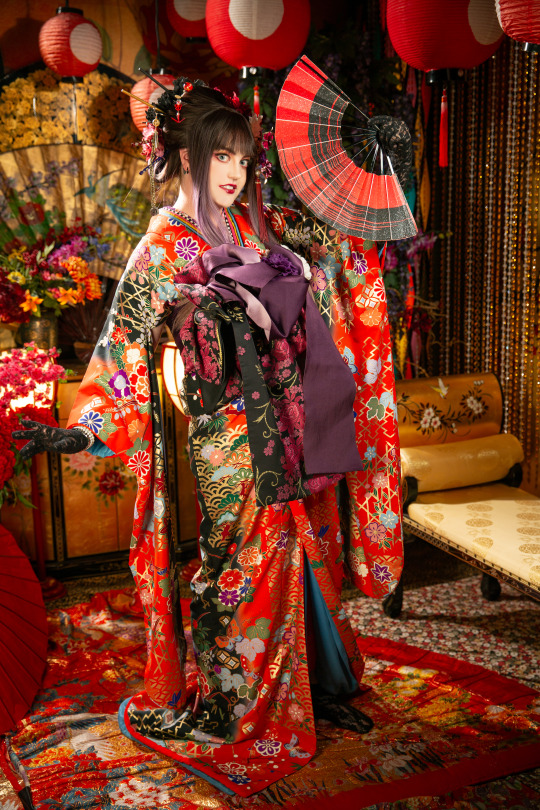
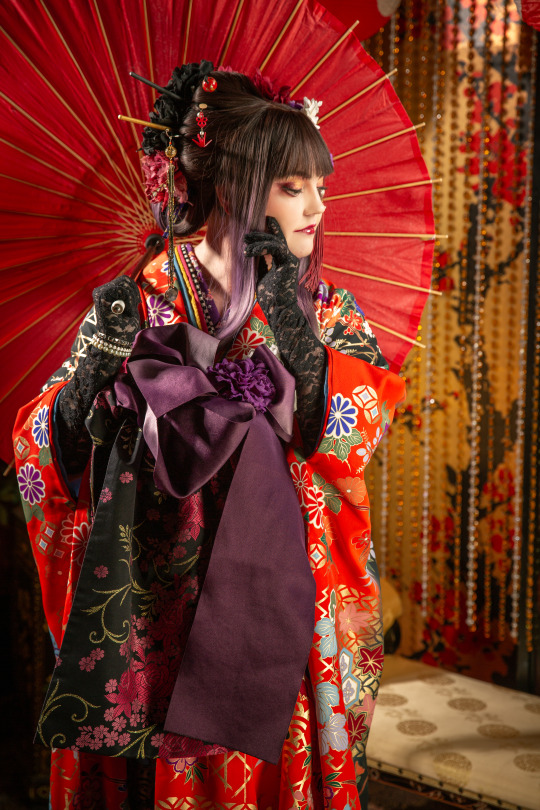
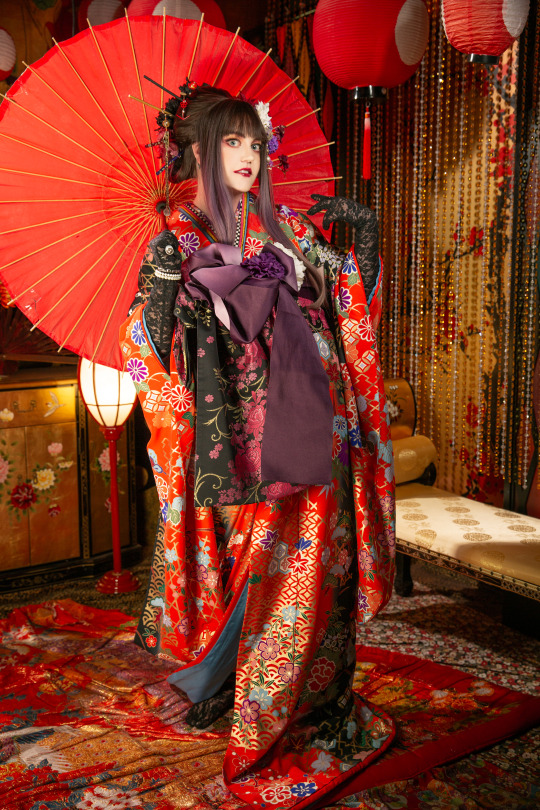
Did this absolutely STUNNING photoshoot at Studio Esperanto in Kyoto. It was one of my favorite experiences in the three weeks in Japan. I felt so ethereal, it doesn't look like me at all.
0 notes
Text
#travel#buddhist tour packages india#buddhist pilgrimage tour packages#buddhist travel#monastery buddhist#buddhisttemple#varanasitour#sarnath#tourist#hong kong#singapore#south korea#japan tourism
0 notes
Text
youtube
Phoebe Bridgers - Kyoto (Official Video)
1 note
·
View note
Text
Shabuzen Yotsuya - an Indian tourist in Japan (yotsuya tokyo)
This is a part of a 3 part series of ‘an Indian in Japan’. Read earlier post here: earlier In a nutshell: Loved the food that we were having for the first time in life. The English speaking waiting staff helped warmly to teach us how it is eaten, what’s the best combination etc. Food type – Shabu Shabu (non vegetarian) Address: Shabuzen Yotsuya Contact details : +81…

View On WordPress
#food tourism japan#food trip to japan#Indian in Japan#Indian travels to japan#Japan#Japan cuisine#Japan food#Japan tourism#Japan trip#Japanese cuisine#japanese food#restaurants in Tokyo#shabu shabu#shabu shabu restaurants Tokyo#shabuzen#Shabuzen Tokyo#Shabuzen Yotsuya#Tokyo#Tokyo restaurants#Yotsuya#Yotsuya restaurants#Yotsuya shabu shabu restaurants
1 note
·
View note